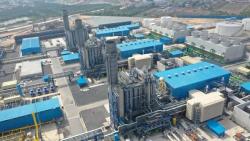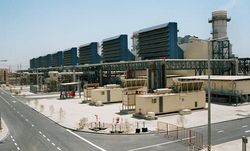
OR WAIT null SECS
© 2024 MJH Life Sciences™ and Turbomachinery Magazine. All rights reserved.
Testing of seals facing two-phase flow
Below is a note from Dara Childs, director of Turbomachinery Laboratory, Texas A&M University.
"There are an increasing number of compressor applications where a significant proportion of liquid flow is involved. The seals of interest are comparatively long balance-piston or division-wall seals, generally with roughened (round-hole or honeycomb-hole pattern) stators and smooth rotors. Representatives from various companies have approached the Turbomachinery Laboratory at Texas A&M University (TAMU-TL) to test 2-phase, mainly-gas, annular seals for several years. In regard to using the existing air-seal test, our central concern was the rig’s 'fragility.' Specifically, we were concerned that slugs of fluid would create excessive forces that would cause contact forces.
For reasons that are unrelated to 2-phase testing, the test housing supports have been substantially strengthened, alleviating this concern. The rotordynamics of helico-axial, multi-phase pumps can depend to a considerable extent on the reaction forces developed by the unit’s balance-piston seal. Test evidence suggests that 2-phase flow conditions create unpredicted seal forces that can adversely impact rotordynamics.
The Turbomachinery laboratory at Texas A&M (TLTAMU) has previously proposed testing mainly-liquid liquid flow for pumps in a test rig that has been used for laminarflow annular seals and hydrodynamic bearings. This test rig uses oil as the test fluid.
After some thoughtful discussion, the TAMU-TL is proposing that the current air seal test facility be modified to test over a range 2-phase flow from all-water to all-gas conditions. The new more-rugged vertical housing support will be able to handle 2-phase tests over a wide range of operating conditions. Several modifications are required to convert the current air seal test facility to a general 2-phase loop, including purchase of a new supply pump. The current pump was sized to provide flow for two hydrostatic support bearing plus a small-diameter hydrostatic test bearing. A replacement pump is required to provide flow for the new test seals.
One continuing uncertainty in the test program is the lack of stationary test results due to unsteady flow conditions arising from a 2-phase mixture; i.e., the reaction forces could reasonably be expected to change continuously producing time varying measured dynamic stiffness coefficients.
Luis San Andrés has faced a similar issue in regard to testing squeeze film dampers that are ingesting air, producing an unsteady bubbly mixture. Based on extended test times plus averaging of the measured results, he has produced measured results characterized by means with expected deviations. We plan to follow similar procedures in our proposed test program.
Dr. Luis San Andrés recently presented a model (2011) for an annular seal with 2-phase flow. There has been recent interest in measuring the rotordynamic coefficients of a representative seal in 2-phase-flow conditions to examine the model’s accuracy. A validated 2-phase annular seal model would be of obvious value in predicting the rotordynamic characteristics of multi-phase pumps in sub-sea applications or in predicting the rotordynamic coefficients of a compressor that had appreciable liquid content at discharge.
Dr. Dara Childs will outline a proposed test program for substantially higher range of GVF ratios from zero (no gas) to one (all gas). The program will cost ~$500K and extend for ~2 years. Program sponsors will receive the test data plus a source-code copy of Dr. San Andrés’ code.
After considerable thought and some preliminary designs, we have decided that the best way forward on 2-phase testing is to tackle the mainly-liquid and mainly-gas (and a good deal of the GVF ratios in between) by converting and upgrading the current annular air seal test rig."



